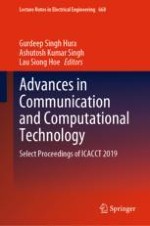This book presents high-quality peer-reviewed papers from the International Conference on Advanced Communication and Computational Technology (ICACCT) 2019 held at the National Institute of Technology, Kurukshetra, India. The contents are broadly divided into four parts: (i) Advanced Computing, (ii) Communication and Networking, (iii) VLSI and Embedded Systems, and (iv) Optimization Techniques.The major focus is on emerging computing technologies and their applications in the domain of communication and networking. The book will prove useful for engineers and researchers working on physical, data link and transport layers of communication protocols. Also, this will be useful for industry professionals interested in manufacturing of communication devices, modems, routers etc. with enhanced computational and data handling capacities.
